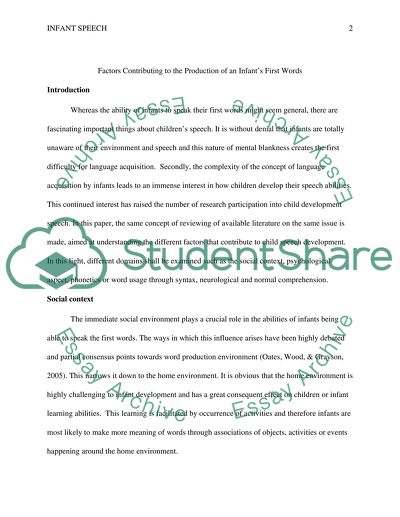Cite this document
(“What factors contribute to the production of an infant's first words Essay”, n.d.)
Retrieved from https://studentshare.org/psychology/1482845-what-factors-contribute-to-the-production-of-an
Retrieved from https://studentshare.org/psychology/1482845-what-factors-contribute-to-the-production-of-an
(What Factors Contribute to the Production of an infant'S First Words Essay)
https://studentshare.org/psychology/1482845-what-factors-contribute-to-the-production-of-an.
https://studentshare.org/psychology/1482845-what-factors-contribute-to-the-production-of-an.
“What Factors Contribute to the Production of an infant'S First Words Essay”, n.d. https://studentshare.org/psychology/1482845-what-factors-contribute-to-the-production-of-an.


